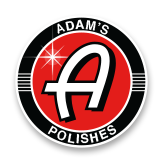Since releasing our Graphene Ceramic Coating™ in July of 2020, we have received hundreds of questions and comments through social media, forum, Facebook community, emails, and chats, in regard to it and our follow-up products in our graphene line of products. Our Graphene Ceramic Coatings are an evolution of our traditional quartz (SiO2) based ceramic coating offerings. We are very proud to offer this technology - we have received a large amount of positive feedback and reviews on how our Graphene Ceramic Coating and other reduced graphene oxide infused products perform, their ease of application, and the wow-factor of the finished result on the vehicle. There are some misconceptions too, which we have done our best to address and explain in videos and articles, and through questions and answers across various platforms like social media live feeds, show event demonstrations, clinics, and so on. This write-up will serve to address the what’s, why’s, and how’s about our graphene products.
Update: Since publishing this article, we have introduced Advanced versions of our Graphene Ceramic Coating™ and Graphene Ceramic Spray Coating™. Graphene Ceramic Coating™ Advanced and Graphene Ceramic Spray Coating™ Advanced as their names imply, are further enhanced versions of our Graphene Ceramic Coating™ options, with even more durability due to being thicker formulas. Our advanced graphene coatings have 50% increased active resin content compared to their regular versions, meaning they leave a thicker layer of protection on the surface, with an even higher contact angle for water-repellency, less chance of water-spotting, and slicker feel.
Graphene Ceramic Coating™ Advanced and Graphene Ceramic Spray Coating™ Advanced are still easy to work with overall, and they follow the same application processes outlined later in this write-up; however they do require a little more effort and care in the application and removal process, so that is why we consider them advanced formulas. They can provide upwards of 9 years or 18-24 months of protection on your vehicle’s many exterior surfaces, depending on which option you choose. To learn more about Graphene Ceramic Coating™ Advanced and Graphene Ceramic Spray Coating™ Advanced, and how they differ from their regular versions, click here to read our separate article: Understanding Graphene Ceramic vs.
Graphene Ceramic Coating Advanced
